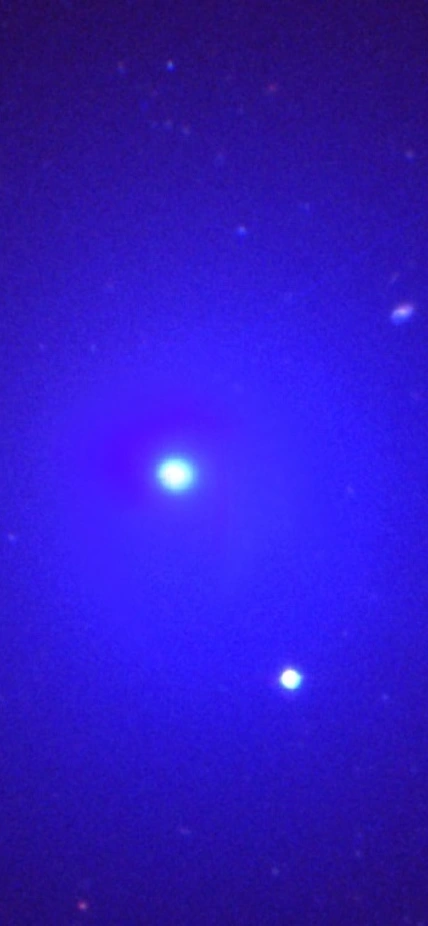Pasadena, CA— Carnegie’s Benjamin Shappee is part of a team of scientists, including an Australian amateur astronomer, which discovered a new comet last week.
Called the All Sky Automated Survey for Supernovae (ASAS-SN), the international collaboration, which is headquartered at the Ohio State University, uses a network of eight 14-centimeter telescopes around the world to scan the visible sky every two or three nights looking for very bright supernovae.
But this time out they found something else—a comet.
Jose Prieto, a former Carnegie postdoc now a professor at Universidad Diego Portales in Chile, was the first ASAS-SN team member to notice the bright, moving object.
Prieto described the first step of the discovery: “While I was scanning the images obtained the night of July 19, I noticed this light source was different from the typical transient sources we discover—slightly extended with respect to normal stars and moving between consecutive images that were obtained within minutes of each other. Checking the catalog of known moving objects—asteroids and comets—did not give any known object at the position of the source.”
The ASAS-SN team realized the object he was looking at was most likely something unknown, which was confirmed soon afterward by additional images from one of the team’s amateur astronomer members in Australia, Joseph Brimacombe.
“Comets move so fast that even being able to see it in Chile and Australia in the same night was a real challenge,” said Shappee, who is a founding member of ASAS-SN. “Without Joseph’s observation, the next night would have been much more difficult, since we would only have had a rough idea where to look.”
Using their network of telescopes, the team followed the comet’s trajectory for three days and noted it significantly brightened over this period. Then it faded slightly when they observed it again after another three days had passed. It’s possible that this was due to what’s called an outburst, a sudden increase in brightness caused by an ejection of dust and gas that temporarily increases the size of the envelope of material that surrounds a comet’s solid, icy nucleus.
Shappee added: “comet ASASSN1 is approaching our inner Solar System right now and will be for several months. It should remain an interesting object for sky gazers the rest of the year.”
Top Image Caption: An image from the Magellan 6.5m telescope of the comet discovered by the All Sky Automated Survey for Supernovae (ASAS-SN) team, which they have named ASASSN1. Image is courtesy of Juna Kollmeier, Nidia Morrell, and Benjamin Shappee.
